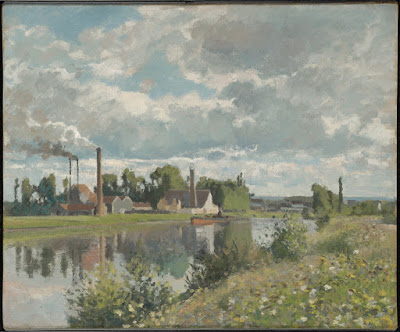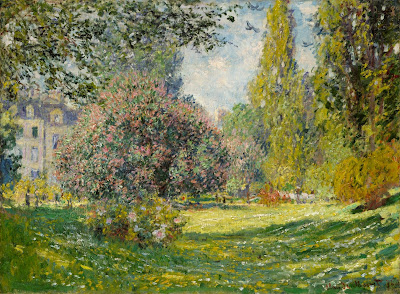What an artist captured on 1950s Orchard Street
Top 10 Night Sky Objects for Amateur Astronomers
Pet Shop Boys Share Live Cover Of Blur's 'Girls & Boys'
2008 September: Pet Shop Boys, 2010 November: Pet Shop Boys - 1985-1989, 2011 January: Behaviour, 2011 May: Very, 2011 December: Bilingual, 2012 March: "Always on My Mind", 2012 August: Nightlife, 2012 September: "Where the Streets Have No Name (I Can't Take My Eyes off You)", 2012 December: Release, 2013 March: Pandemonium Tour, 2013 November: Leaving, 2014 April: Introspective (1988), 2014 August: Go West, 2015 January: "So Hard"(1990), 2015 February: "I'm with Stupid" (2006), 2015 July: Thursday EP (2014), 2016 May: "Twenty-something" (2016), 2017 September: Left To My Own Devices / The Sound of the Atom Splitting (1988), 2019 May: It's A Sin (1987)
Avant Gardening - New Age Steppers (2021)
2010 October: Ari Up (17 January 1962 – 20 October 2010), 2012 July: Subatomic Sound System meets Lee Scratch Perry & Ari Up of the Slits (7″ vinyl), 2014 September: Live in Cincinnati and San Francisco 1980, 2015 August: Return Of The Giant Slits (1981/2007), 2016 May: "Typical Girls" / "I Heard It Through the Grapevine" (1979), 2016 July: "Man Next Door" - Berlin 1981
Birds by the Billions: A Guide to Spring’s Avian Parade
“... The Northeast: a festival of songbirdsI came to birding relatively late. My parents had a bird feeder on the Jersey Shore where I grew up, and I’d watch house finches and sparrows come and go. But I knew nothing about the migrations of songbirds until my late 20s when I interviewed Roger Tory Peterson, author of the iconic fields guides. With the spring migration underway, this is the time to discover — or rediscover — the allure of birding. ... Each day brings platoons of warblers, vireos, thrushes, tanagers and other migrants. The first thing you learn when you pick up your binoculars and head out is that you are not ‘bird-watching,’ but ‘birding.’ Bird-watching implies a sedentary activity, while birding is proactive. ...”
2008 September: Birds, 2008 June: Bird Songs, 2017 April: Of a Feather, 2017 June: Bird Sounds, 2017 July: Beautifully Designed Tiny Houses… For Birds, 2019 September: The Crisis for Birds Is a Crisis for Us All, 2019 March: She Invented a Board Game With Scientific Integrity. It’s Taking Off., 2019 June: Where Birds Meet Art … After Dark, 2019 September: The Crisis for Birds Is a Crisis for Us All, 2019 October: A Quest to Protect the World’s Last Silent Places, 2020 June: Making a Garden That Welcomes the Birds, 2020 July: New Bird Song That ‘Went Viral’ Across This Species of Sparrow Was Tracked by Scientists For the First Time, 2020 August: How to Use Binoculars - Jason Ward, 2020 October: Get the Birds To Come To You, 2020 June: BirdNET
Banknote embroidery as political art – in pictures
A Guide to the Extensive Musical Legacy of Mills College
“When he started teaching at Mills College in the late 1990s, Fred Frith already had an extensive resume. He had founded British avant-rock pioneers Henry Cow and collaborated with legends such as Richard Thompson, Brian Eno, and John Zorn. Yet he still found himself intimidated by Mills’ status as a breeding ground for inventive and influential experimental musicians. As he later told the L.A. Times, ‘When I first got here, I was a little overwhelmed by the history.’ It’s hard to blame him. The musical legacy of Mills College is dauntingly vast. Just listing all the artists who have passed through as students and professors—figures as diverse as Terry Riley, Laurie Anderson, Phil Lesh, and Joanna Newsom—could take days. ...”
Capitol Police Told to Hold Back on Riot Response on Jan. 6, Report Finds
“The Capitol Police had clearer advance warnings about the Jan. 6 attack than were previously known, including the potential for violence in which ‘Congress itself is the target.’ But officers were instructed by their leaders not to use their most aggressive tactics to hold off the mob, according to a scathing new report by the agency’s internal investigator. In a 104-page document, the inspector general, Michael A. Bolton, criticized the way the Capitol Police prepared for and responded to the mob violence on Jan. 6. The report was reviewed by The New York Times and will be the subject of a Capitol Hill hearing on Thursday. Mr. Bolton found that the agency’s leaders failed to adequately prepare despite explicit warnings that pro-Trump extremists posed a threat to law enforcement and civilians and that the police used defective protective equipment. ...”
2021 February: 77 days: Trump’s campaign to subvert the election, 2021 February: First They Guarded Roger Stone. Then They Joined the Capitol Attack., 2021 February: A Small Group of Militants’ Outsize Role in the Capitol Attack , 2021 March: Police Shrugged Off the Proud Boys, Until They Attacked the Capitol, 2021 March 21: 'We've Lost the Line!': Radio Traffic Reveals Police Under Siege at Capitol
Burn! - Gillo Pontecorvo (1969)
Barney Wilen - La Note Bleue (1987)
LondonJazzCollector (Audio)
Jack Delano's Color Photos of Chicago's Rail Yards in the 1940s
“Jack Delano was one of the photographers who worked in Roy Stryker’s Farm Security Administration photography program in the early 1940s, traveling the American countryside, photographing people and places with the stated goal of ‘introducing America to Americans.’ In 1942 and ’43, Delano spent time in the rail yards of Chicago, documenting the busy freight hub and the countless workers who kept the trains running 24 hours a day. Some of his most striking images were made on Kodachrome color transparencies, wonderfully preserved in the Library of Congress today. Collected below, a handful of images from Chicago as it was some 75 years ago. ...”
Marcus Glitteris on Curating “Home Grown” at Village Works with: Optimo NYC, Marina Reiter, BC1, Nora Timbila, A. Candela & More
Dubcast Vol.14 (Blind Prophet Returns)
Lost Generation
The ideology hiding in SimCity’s black box
2010 April: SimCity
A Walking Tour In Southern France - Literature by Ezra Pound
2020 April: The Cantos
David Johansen - David Johansen (1978)
YouTube: David Johansen 1 / 9, YouTube: The David Johansen Group 1 / 18 (Live)
2015 June: New York Dolls (1973), 2016 September: Too Much Too Soon - New York Dolls (1973), 2017 April: From Paris With Love (L.U.V.), 2020 July: Valley of the New York Dolls
How to Make Stunning Croissants at Home
Seine - Île de la Cité
“The Île de la Cité is one of two remaining natural river islands in the Seine within the city of Paris (the other being the Île Saint-Louis). It is the center of Paris and the location where the medieval city was refounded. The western end of the islet has held a palace since Merovingian times, and its eastern end since the same period has been consecrated to religion, especially after the 10th-century construction of a cathedral preceding today's Notre-Dame. ...”
Discover the Night: International Dark Sky Week is Here!
Live from Studio S2 - Hania Rani (2021)
A Cyclist on the English Landscape
“A year ago, as a travel photographer grounded by the pandemic, I started bringing a camera and tripod with me on my morning bicycle rides, shooting them as though they were magazine assignments. It started out as just something to do — a challenge to try to see the familiar through fresh eyes. Soon it blossomed into a celebration of traveling at home. I live in a faded seaside town called St. Leonards-on-Sea, in Sussex, on the south coast of England. If you’ve not heard of it, you’re in good company. It’s not on anybody’s list of celebrated English beauty spots. Indeed, most of my riding is across flat coastal marsh or down-at-the-heel seafront promenades. ...”
The Moment of Impressionism

“Théodore Duret, one of Impressionism’s most impassioned champions, wrote in his famous brochure of 1878, Les Peintres impressionnistes: The impressionists didn’t come into being by themselves, they didn’t shoot up like mushrooms. They are the product of a regular evolution of the modern French school. Natura non facit saltus any more in painting than in other things. The impressionist descend from the naturalist painters, their fathers are Corot, Courbet, and Manet. It’s to these three masters that the art of painting owes the simplest procedures of facture and that spontaneous touch, proceeding by large lines and by the mass, which alone brave the passage of time. ...”

John Ashbery’s Music Library: A Playlist
A Study of New York City’s Belgian Block Heritage
Ephemeral New York: A downtown alley’s Belgian block paving stones
Nicola Cruz
'A parallel universe': the rickety pleasures of America's backroads - in pictures
Parting Shot By Mikhail Horowitz
2015 October: Big League Poets (1978)
Roberto Musci, Giovanni Venosta – Messages & Portraits (1990)
YouTube: The Ups & Downs of a Chewing Gum, Technowaltz, Empty boulevard, Lullabies: mother sings, father plays...
2012 April: Roberto Musci, 2016 December: Tower Of Silence (1983-87)










































